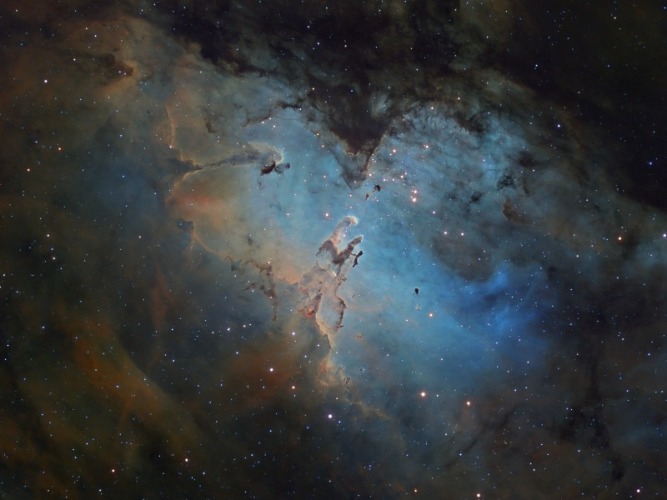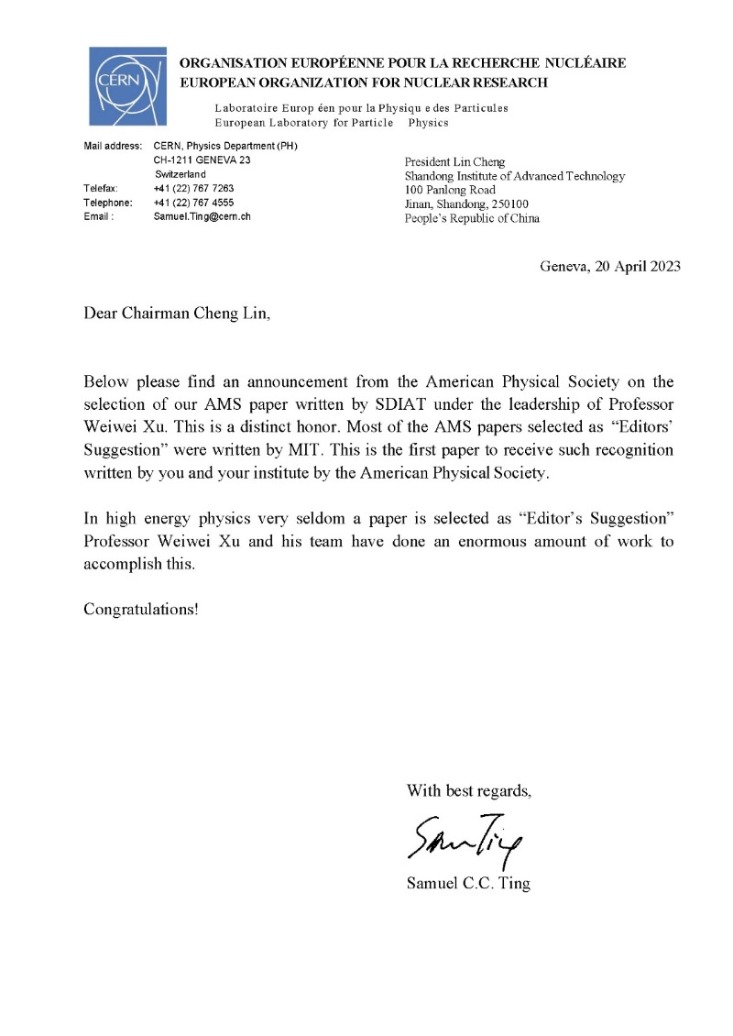Cosmic Ray Flux Temporal Evolution
Release date: 2025-05-16
Visits: 674
Source: 山东高等技术研究院
Cosmic Ray Flux Temporal Evolution
When cosmic rays enter the solar system, their fluxes vary over time due to the influence of solar activity and the heliospheric magnetic field. Measuring the temporal evolution of cosmic ray fluxes serves as an experimental approach to studying their propagation laws within the solar system.

In cosmic ray origin studies, it is known that cosmic rays are primarily composed of positively charged nuclei such as proton, helium, carbon, and oxygen. Consequently, previous research on solar modulation focused exclusively on these components. Negatively charged electron is rare in cosmic rays, while positron, the antimatter counterparts of electron, is exceptionally rare. Only space-borne magnetic spectrometers like AMS can accurately identify electron and positron signals from the vast cosmic ray background, enabling their precise measurements. Benefiting from its long-term stable operation in space, AMS has completed cosmic ray data collection spanning more than 11 years, equivalent to a full solar cycle.


Over four years, the physics analysis team developed an innovative data analysis method. By utilizing the Transition Radiation Detector (TRD) to distinguish proton background contamination in electron/positron signals, the team significantly enhanced the statistics of positron and electron data. This breakthrough enabled the team to achieve the first-ever precise measurement of positron and electron fluxes with the longest temporal span and highest temporal resolution. Through the analysis of 200 million electron events extracted from a vast cosmic ray sample, the team has accomplished the world's first precise measurement of daily cosmic ray electron fluxes. They discovered novel temporal evolution structures in the electron flux, providing groundbreaking insights into the charge-sign dependence of solar modulation effects. These findings offer critical new perspectives for understanding how solar activity influences particles with different charge sign.
In the same year, the team has achieved the second major breakthrough in the study of cosmic ray flux time evolution
In October, the physics analysis team has completed an 11-year daily measurements of positron flux by utilizing 3.9 million positron events collected by AMS. This study is the first-ever measurement of the daily flux of cosmic ray positrons, revealing important patterns in the propagation of cosmic rays within the solar system. The findings were published in the Physical Review Letters (PRL). This is our team’s second significant achievement in the study of cosmic ray flux time evolution, in collaboration with the National Center for Energy, Environment, and Technology, Spain (CIEMAT) and the Institute of High Energy Physics of the Chinese Academy of Sciences (IHEP). These accomplishments have marked SDIAT’s leading position in the electron research within the AMS international collaboration.

The first groundbreaking scientific discovery of AMS made by scientists in China
The result was published in April, 2023 in the prestigious journal PRL and selected as PRL Editors' Suggestion, highlighted as a “Viewpoint” by Physics Magazine from the APS. A congratulatory letter was sent Prof. Samuel C.C. Ting to praise the outstanding contributions of Weiwei Xu's team.



In cosmic ray origin studies, it is known that cosmic rays are primarily composed of positively charged nuclei such as proton, helium, carbon, and oxygen. Consequently, previous research on solar modulation focused exclusively on these components. Negatively charged electron is rare in cosmic rays, while positron, the antimatter counterparts of electron, is exceptionally rare. Only space-borne magnetic spectrometers like AMS can accurately identify electron and positron signals from the vast cosmic ray background, enabling their precise measurements. Benefiting from its long-term stable operation in space, AMS has completed cosmic ray data collection spanning more than 11 years, equivalent to a full solar cycle.


In the same year, the team has achieved the second major breakthrough in the study of cosmic ray flux time evolution
In October, the physics analysis team has completed an 11-year daily measurements of positron flux by utilizing 3.9 million positron events collected by AMS. This study is the first-ever measurement of the daily flux of cosmic ray positrons, revealing important patterns in the propagation of cosmic rays within the solar system. The findings were published in the Physical Review Letters (PRL). This is our team’s second significant achievement in the study of cosmic ray flux time evolution, in collaboration with the National Center for Energy, Environment, and Technology, Spain (CIEMAT) and the Institute of High Energy Physics of the Chinese Academy of Sciences (IHEP). These accomplishments have marked SDIAT’s leading position in the electron research within the AMS international collaboration.

The first groundbreaking scientific discovery of AMS made by scientists in China
The result was published in April, 2023 in the prestigious journal PRL and selected as PRL Editors' Suggestion, highlighted as a “Viewpoint” by Physics Magazine from the APS. A congratulatory letter was sent Prof. Samuel C.C. Ting to praise the outstanding contributions of Weiwei Xu's team.






